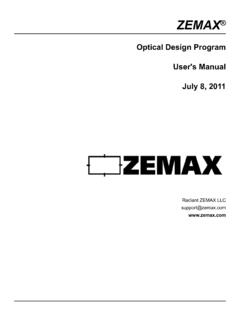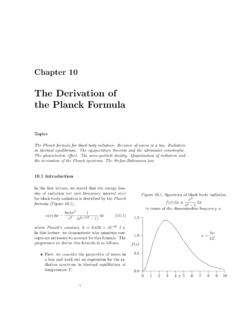Transcription of Important formulae & basic concepts Chapter: Ray Optics
1 Important formulae & basic concepts Chapter: Ray Optics & Optical instruments & Wave Optics XII Physics All distances are measured in meter (m) Snell s law states n = sin i/ sin r n is refractive index i is the angle of incidence r is the angle of refraction Sign convention distances measured in the same direction as incident light is positive Distances measured in the opposite direction is negative All distances are measured from the pole Mirror equation 1 1 1v u f+= u is object distance; v is image distance and f is focal length Sign of focal length of mirror f is negative for concave mirror; f is positive for convex mirror Magnification of a spherical mirror m = -v/u m is positive then image is erect; m is negative then image is inverted For prism 2m211n sin[(A D )/2]nnsin(A /2)+== n2 is refractive index of prism material n1 is refractive index of surrounding medium A is the angle of prism Dm is the angle of minimum deviation For spherical interface 2121n n n nv uR = n1 is refractive index to the left of the refracting surface n2 is refractive index to the right of the refracting surface Thin lens formula 1 1 1v u f = u is object distance(m).
2 V is image distance and f is focal length Distances measured in the same direction as incident light is positive Distances measured in the opposite direction is negative All distances are measured from the optical centre Lens maker s formula 21112(n n )11 1fnR R = R1 and R2 are the radii of curvature of the lens surfaces n2 is the of the lens and n1 is the of surrounding medium Power of lens P = 1/f Power is positive for a converging lens; negative for diverging lens. Unit: dioptre(D) Power of combination of lenses 123P P P P ..=+++ Magnifying power of a simple microscope Dm 1f=+ for object at least distance of distinct vision Dmf= if image is at infinity Magnifying power of a compound microscope OeOeL Dmf ff is focal length of objective f is focal length of eye lens = Magnifying power of a telescope Oefmf= Oef is focal length of objective f is focal length of eye lens wavelength of light in a medium of refractive index n is nn = n is the refractive index of the medium n is the wavelength of incident light is the wavelength of refracted light Young s double slit experiment , conditions for maximum and minimum intensity are dsin m for m = 0, 1, 2.
3 For bright fringesdsin (m 1/2) for m = 0, 1, 2,.. for dark = =+ d is the distance between the slits is the angle the light path makes with the central axis Young s double slit experiment Fringe width is Dd = D is the distance of the slits from the screen d is the distance between the slits is the wavelength of incident light Angular width of fringes is d Diffraction at a single slit of width a gives zero intensity at angles of 2 3, ,a a a etc. is the wavelength of incident light a is the width of the slit Secondary maximas are at 3 50, ,2a 2a etc. Resolving power of a microscope is the reciprocal of minimum separation of two points (dmin) to be seen as distinct. min1 2nsinResolving power = = n is of medium between the object and objective lens is the wavelength of incident light 2 is the angle subtended by the diameterof objective lens at the focus of the microscope.
4 Fresnel distance is the distance beyond which spread of the beam due to diffraction is more than the size a of the slit is significant. 2az= is the wavelength of incident light a is the width of the slit Brewster s law states that Bn tani= The angle of incidence iB is called Brewster s angle. Malus law states that the intensity of transmitted light is 20I I cos= I0 is the intensity of initially unpolarized light and is the angle between the polarization direction of the original light and the polarizing direction of the sheet.

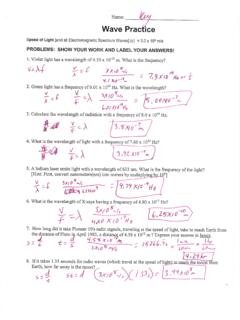
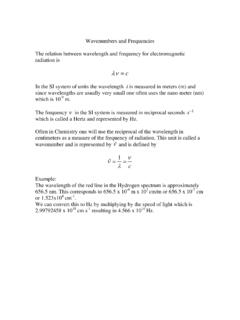


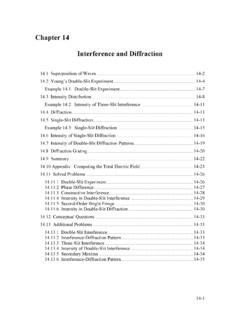
![Lecture 8 Raman [Kompatibilitetsläge]](/cache/preview/d/b/6/8/9/c/e/c/thumb-db689cecbc617a8952df49950b757eeb.jpg)

